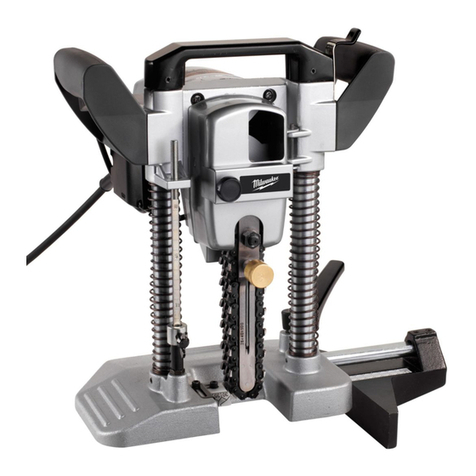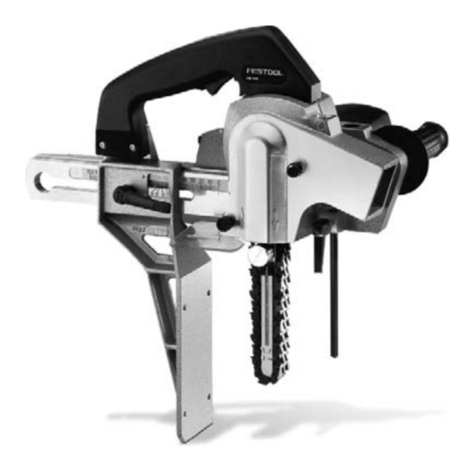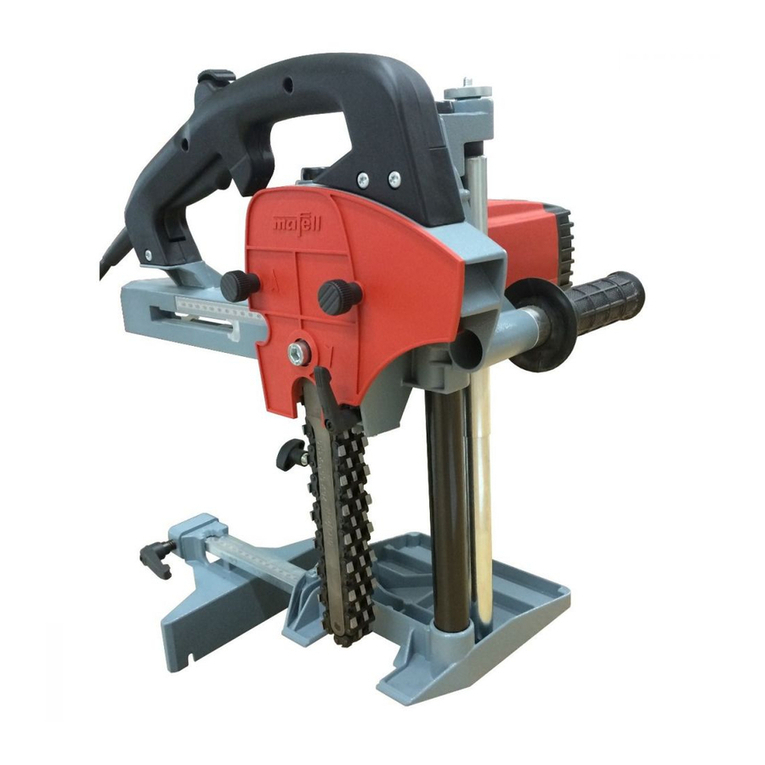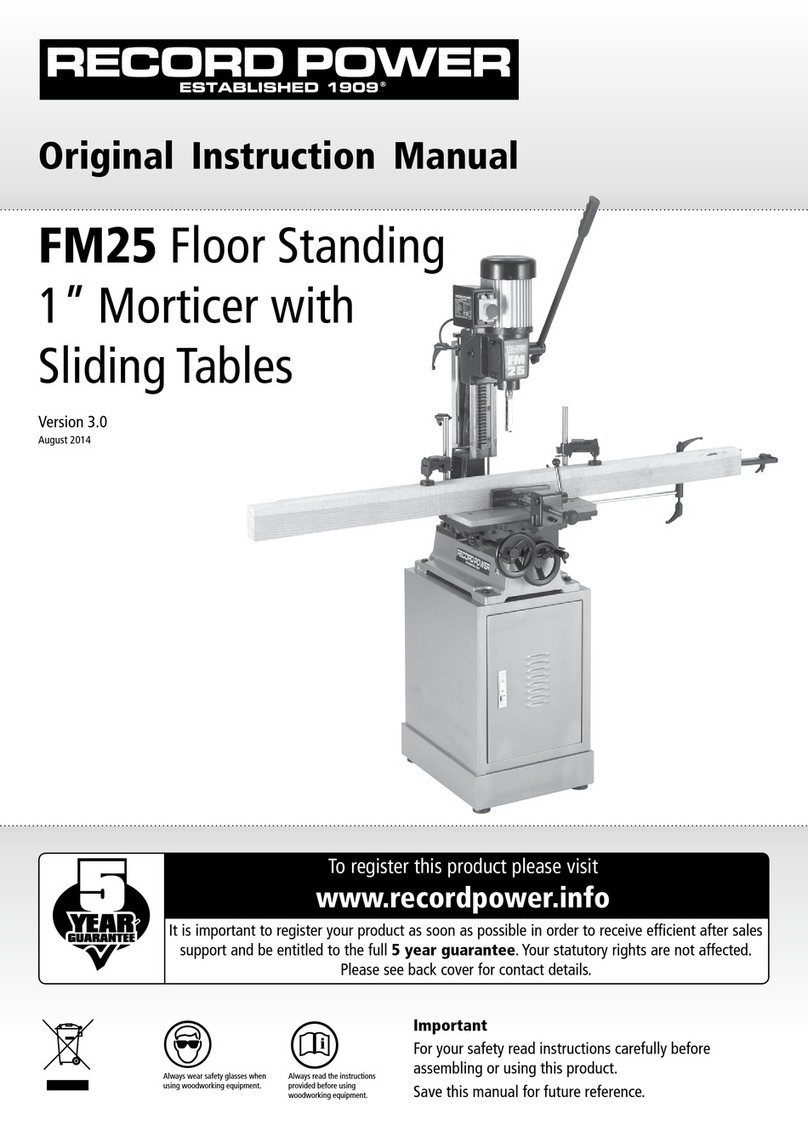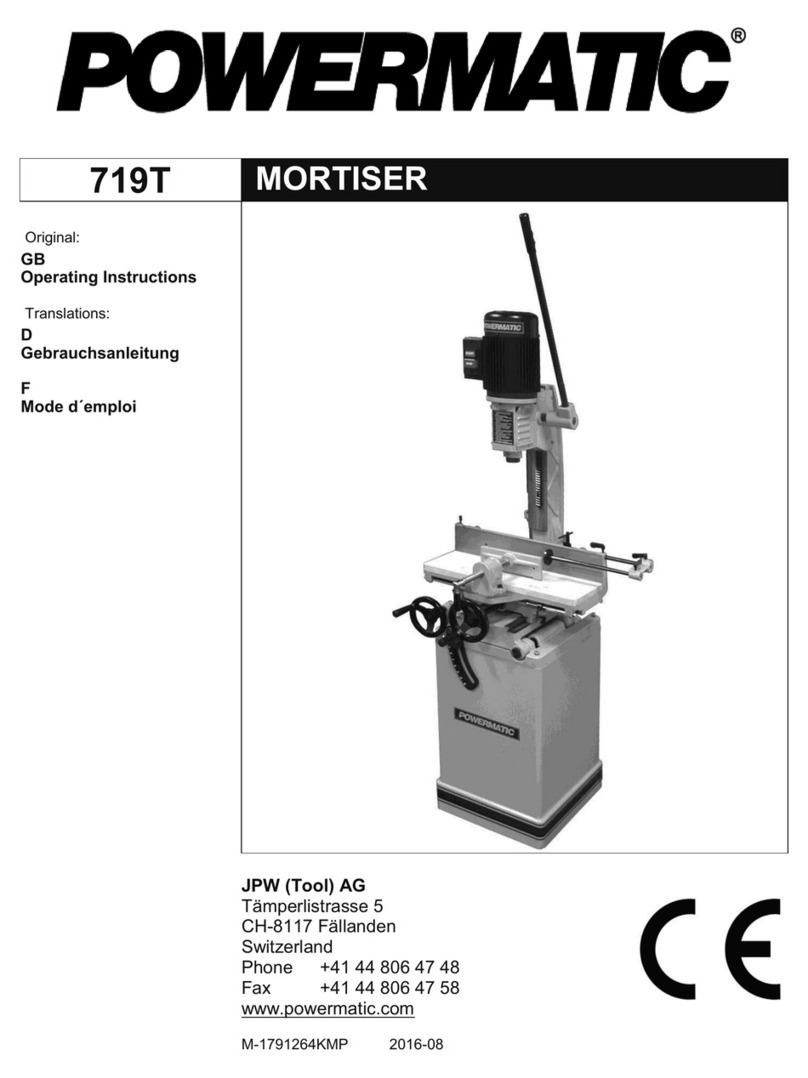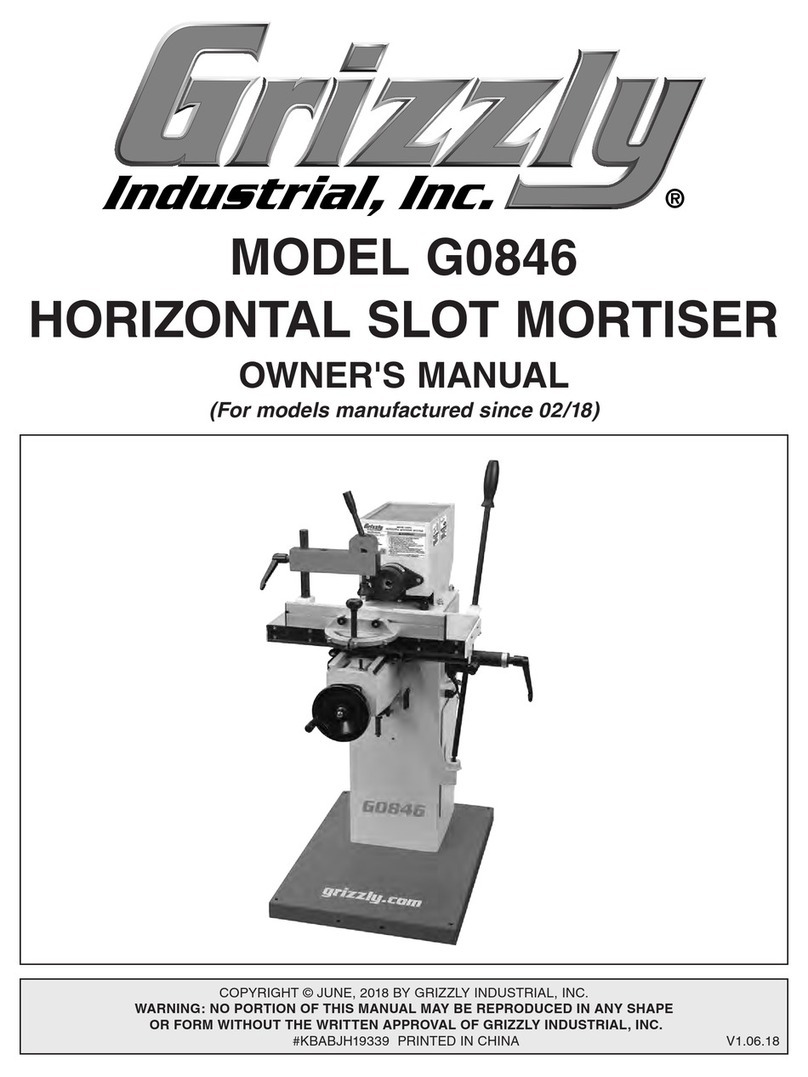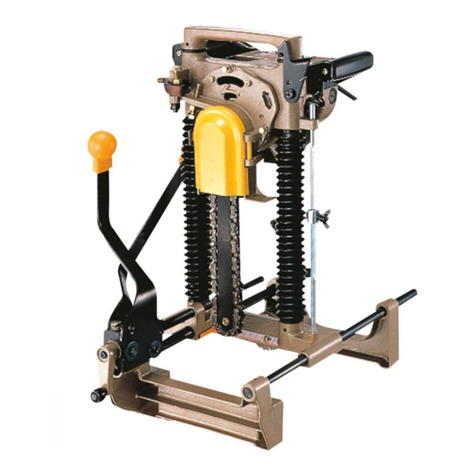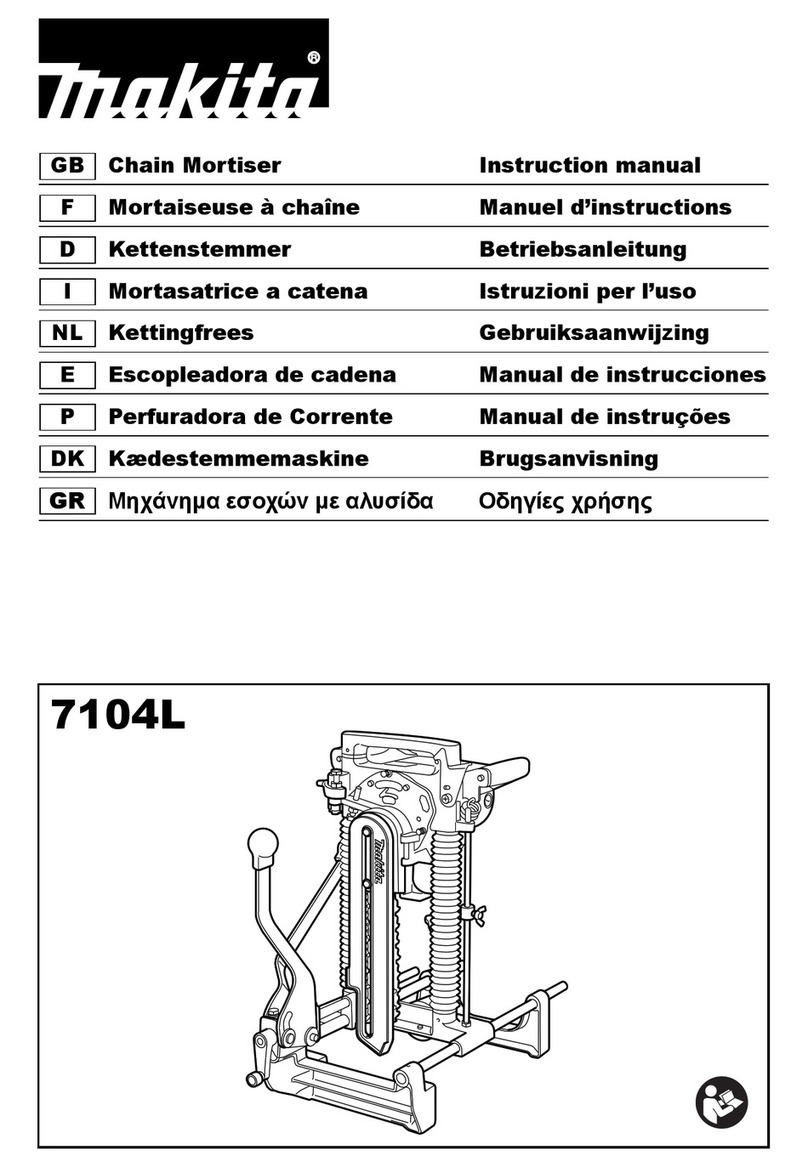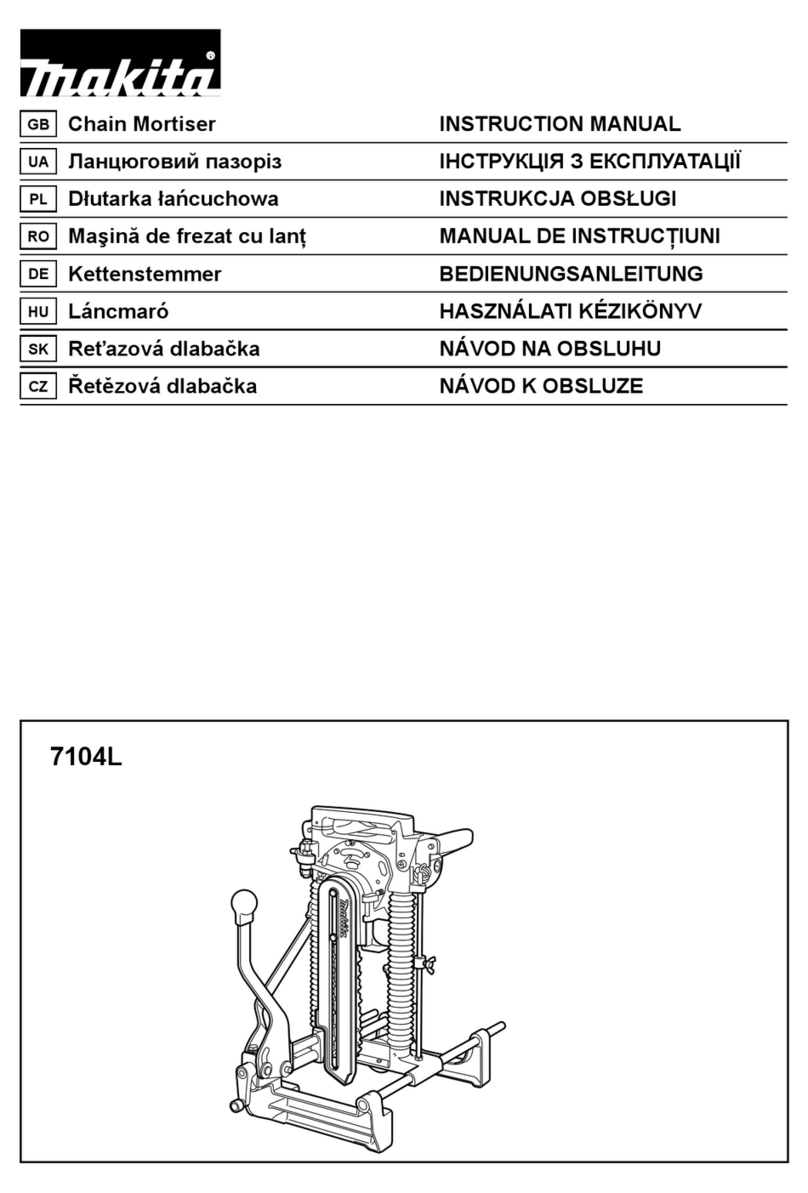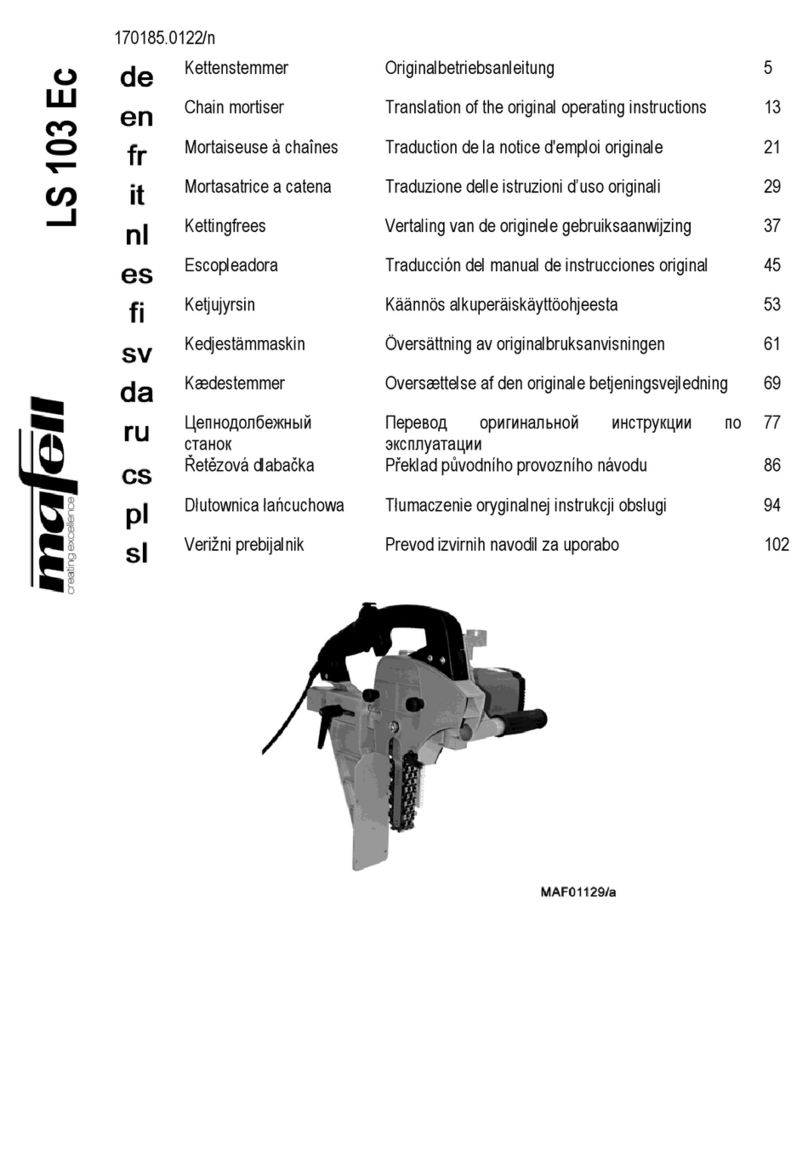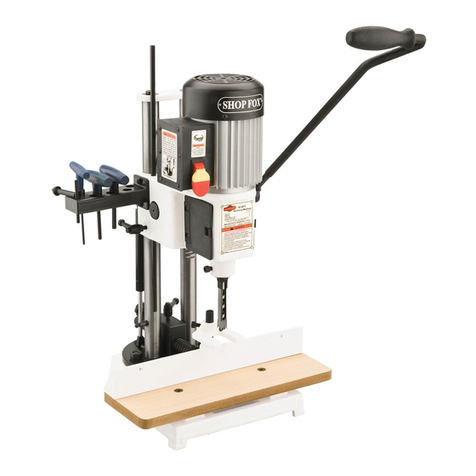
P 4 / 8
[4] Disassembling Gear Section
[5] Disassembling Vice Element
Note: Gear section can be replaced without disassembling Motor section.
Vice element can be pulled out only by loosening Lever 98 ass'y as illustrated in Fig. 7. If chips attach in the Compression
spring 48 and Compression spring 36, the chips make the clamp operation worse. Therefore, disassemble and clean them.
Loosen M6x35 Pan head screw to remove the Compression springs using cordless impact driver with phillips bit No.3 as
mentioned in Fig. 8 while holding Vice shoe so as not to jump by the reaction force of the Compression springs.
[6] Disassembling Front Vice
Main body including Base complete on vice section can be removed backward from
the Vice section in the following steps.
1) Disassemble Vice element in accordance with the above procedure.
2) Forward the main body to the edge of Screw M4 by turning Knob 20 as shown in
Fig. 9 .
Loosen two Levers in the direction of arrows as illustrated in Fig. 10.
Push one end of Spring pin at the right side of Lever B complete using Spring pin
extractor 4.0 (Makita part No. 1R308) and plastic hammer.
Consequently, Pin 9 and some components can be separated as described in Fig. 11.
Fig. 6
Fig. 9
Fig. 8Fig. 7
Fig. 10 Fig. 11
Remove Spring washer 10, Flat washer 10 and Ring 15 from Spindle by hand.
Remove Sprocket 4 from tool by hand. If it is stuck on the spindle firmly, use Gear extractor Large (Makita part No. 1R045).
Strike the reverse side of Chain bar holder using plastic hammer, so Gear housing can be separated from Chain bar holder.
The connecting parts of Chain bar holder and Gear housing are three Spring pins 6-24 only.
Remove gear section from Gear housing, and then tap the gear section on the table to separate Helical gear 47 from the
other components of the gear section.
Loosen M10 Hex. nut using Box
wrench 17.
Type 94 Field insert jig
Sprocket 4 Wall of Chain
bar holder
Compression spring 48 and
Compression spring 36 (inside)
Cordless impact drive with phillips
bit No.3
Vice shoe
Vice element Vice element
Lever 98 assembly
Lever
(Lever B complete)
Lever (Clamp)
Spring pin 4-20
(left side)
Pin 9Flat washer 9
Spring pin 4-20 (right side)
Flat washer 9
Sleeve 9 (inside)
Plastic hammer
Sleeve 9
Lever B complete
Spring pin extractor 4.0
Lever B complete
Screw M14
Vice section
Knob 20
Repair
Remove four M5x80 pan head screws in the front of the tool in the same manner
described in Repairing Motor Section.
To release the tensile force of Tension spring 20, Turn the Motor housing clockwise.
The tension spring 20 will return to the original size. Consequently, Motor housing
complete can be easily removed.
Pull out Chain bar holder to your side from the front of tool while turning it.
Insert Type 94 Field insert jig (Makita part No. 1R275) between Sprocket 4 and the
wall of Chain bar holder in order not to revolve Spindle fixed with the Sprocket 4
as shown in Fig.6. Loosen M10 Hex. nut using Box wrench 17 or Wrench 13-17.
